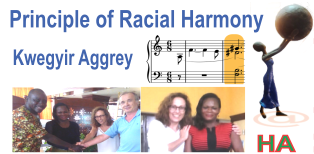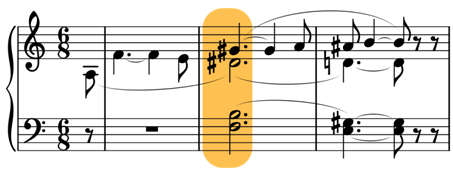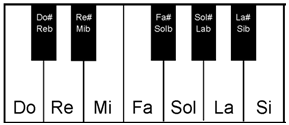Racial Harmony, black keys, Tristan and Isolde
Racial Harmony (Kwegyir Aggrey) Western Music (Tristan and Isolde)


- EENI Principle of Racial Harmony
- Principle of Racial Harmony James Emman Kwegyir Aggrey (black and white keys of a piano)
- Principle of Racial Harmony of James Emman Kwegyir Aggrey and Tristan and Isolde (Reflection by Pedro Nonell)
- Beyond the black and white keys (implications for EENI)

Reflection by Pedro Nonell, Founder and President of the Board of Directors of EENI Global Business School.

One of my biggest hobbies is the music; I like almost all the good music, flamenco, blues, African music... but especially the «Tristan and Isolde» by Richard Wagner. For me, it is undoubtedly one of the most important works of the Western music, the chromaticism and infinity of this opera of about 4.5 hours is unique.
The Tristan and Isolde breaks with the existing principles of tonality by opening doors to the atonal music.
The whole opera is a monument to the love between two people, Tristan (Richard Wagner) and Isolde (Matilde Wessendonk), magnificently expressed by the music. From the musical point of view, there are four unequalled moments: the prelude, the love duet of the second act, the prelude to the third act (totally atonal) and the scene of transfiguration (or death) of Isolde (Liebestod).
In the early stages of the prelude we find the famous Tristan chord:

If we look at all the notes of this passage, from the point of view of the principle of racial harmony enunciated by James Emman Kwegyir Aggrey, we see that there are so many «white keys» (those that do not carry a sharp one, ♯, correspond to the white keys of the keyboard), as «black keys» (they have a sharp front, ♯, correspond to the black keys of the keyboard), the natural (♮) cancels the sharp (that is, changes a note from black to white).
On a keyboard of a piano there are the following notes: Do – Do ♯ - Re - Re ♯ - Mi – Fa – Fa ♯ - Sol – Sol ♯ - La –La ♯ - Si

Let's see the notes, both «black» and «white», that appear in this enigmatic and unparalleled passage.
La - Fa - Mi - (Fa - Si - Re♯ - Sol♯) - La - Mi - Sol ♯ - Re - La♯ - Si
On the notes of a piano scale, I mark the notes used in these bars in yellow:
Do – Do ♯ - Re - Re ♯ - Mi – Fa – Fa ♯ - Sol – Sol ♯ - La –La ♯ - Si
If we consider that neither Mi nor Si «do not have sustained» (without black key), in this chord, we see three «white keys» (Re, Fa, La) and three «black keys» (Do ♯, Re ♯, Sol ♯), and this wonderful combination, weighted between «whites and blacks», is one of the highlights of the Western music.
(NOTE. The harmonic analysis of this chord is much more complex; even some books have been written on the Tristan chord, this brief explanation has been tried to do it in the most intuitive way possible, without the reader knowing of harmony).
The part that we have analysed previously (bars 1 to 4) is repeated changing the key in bars 5 to 8. Before starting in LA, now in SI. In measures 9 to 12, it is repeated but starting in RE.

In the last two measures of the third line, we can see an excellent combination of black and white keys: Mi ♯ - Fa ♯ (Re) - Sol - Sol ♯ that ends with a strange dissonant chord «fortissimo (ff)».
 Armonía racial, teclas negras, Tristán e Isolda
Armonía racial, teclas negras, Tristán e Isolda
 Harmonie raciale / Tristan et Isolde
Harmonie raciale / Tristan et Isolde
 Harmonia racial / Tristão e Isolde
Harmonia racial / Tristão e Isolde


 Tweet
Tweet